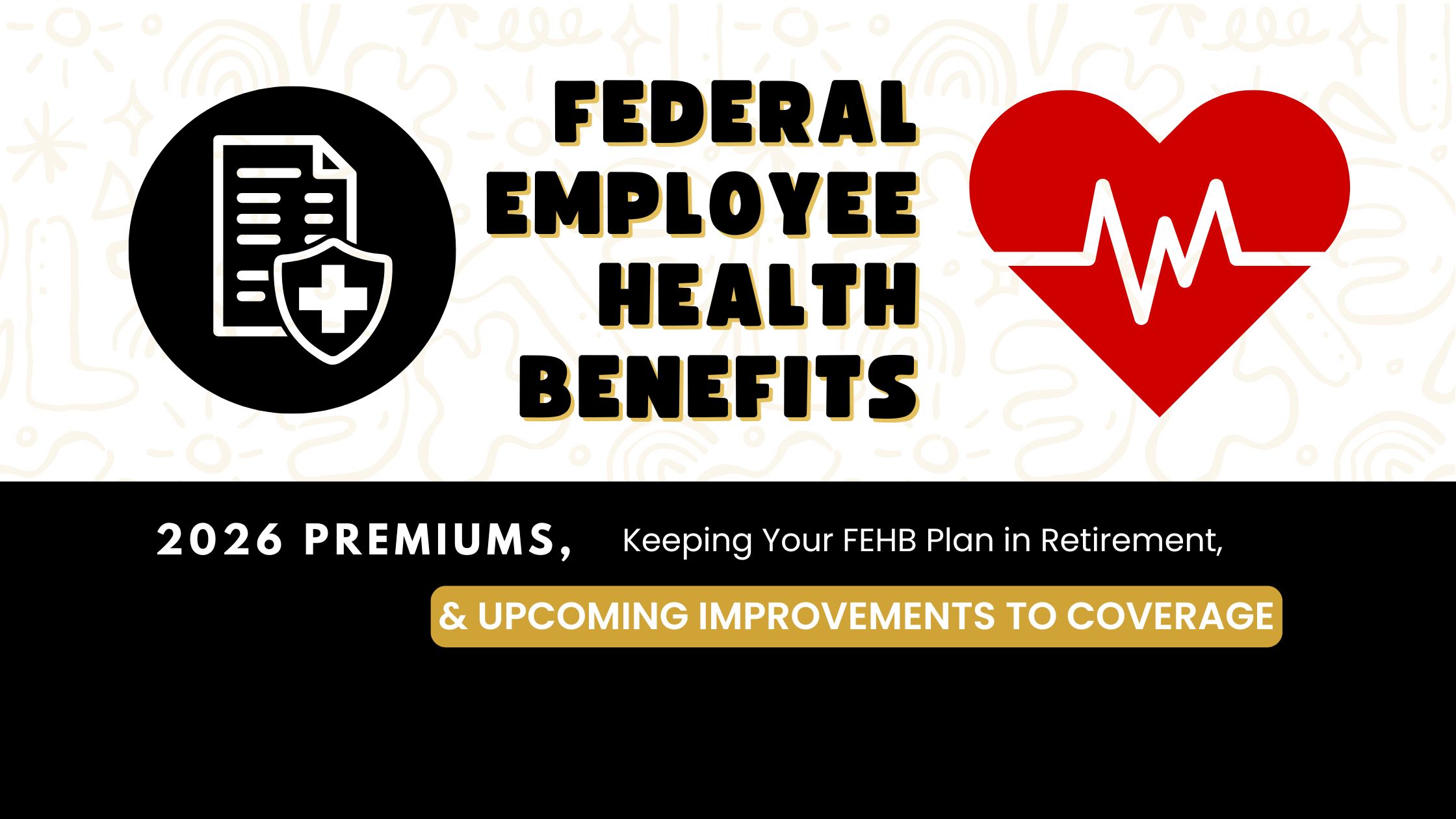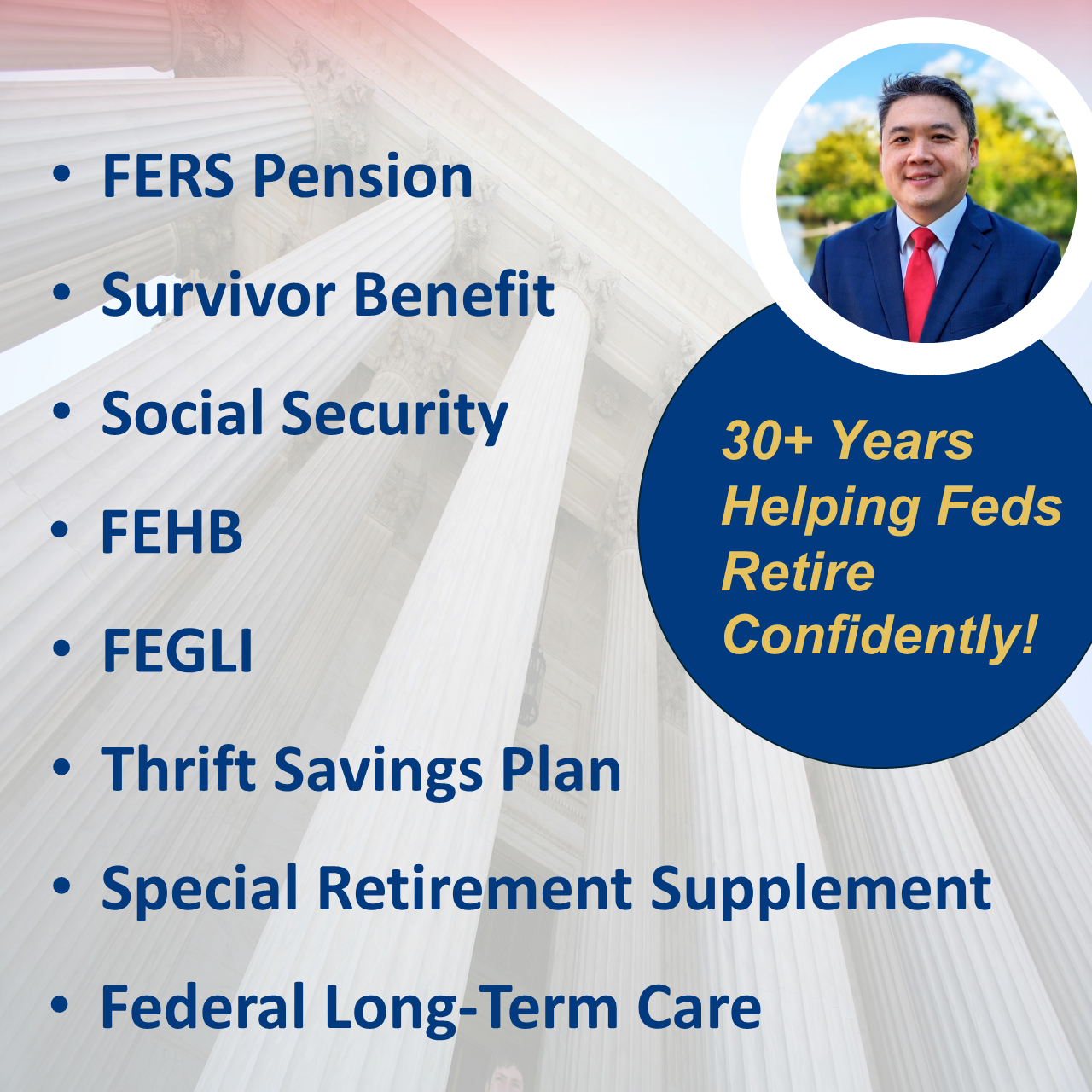Retiring from FERS? Explore the 2026 federal employee health benefit outlook: plan premiums, FEHB in retirement, and Medicare. Understand FEHB plan options and compare plans.
FEHB in Retirement and Federal Health Insurance Benefits Outlook for 2026
There’s a lot of uncertainty surrounding federal employment and the outlook for the Federal Employee Health Benefits (FEHB) program is no different. We’ll look at some improvements OPM is hoping to make before the upcoming open season for FEHB plans as well as the potential for another steep increase in premium costs. Also, this article will explore possible changes coming to health insurance for federal employees and retirees that would could health care expenses to further grow for enrollees, and finally, we’ll review how FEHB works in retirement and how from when you’re actively working in federal service.
Health Insurance Outlook for Next Year’s FEHB Plans: Improvements, Premiums, and Looming Changes to Federal Benefits
There are some improvements that OPM is hoping to implement this year to alleviate the “administrative burden” on plan participants. While these upgrades will hopefully make managing healthcare plans easier, the cutdown on expenditures will unlikely have much of an impact on the amount enrollees pay for their health insurance.
Improving Service and Management of FEHB Health Plans
The three main areas in which FEHB is hoping to improve all involve digitalization of health insurance management for federal workers, retirees, and their covered family members.
| Claims Filing Process | Helping insurance carriers to minimize paper-based claims processed through mail and fax to enhance the digital tools for processing insurance claims. |
| Effective Provider Directory Tools | Ensuring doctor and organization information is up to date across all carrier platforms to improve user experience when managing health care options. |
| Disputed Claims Information | Making information about the disputed claims process, and what can be disputed, easier to access and understand. |
Stay up to date with your federal employee benefits and retirement planning news – Subscribe to Our Newsletter and Receive a free FERS handbook.
2026 FEHB Premiums: Factors, Implications, and Forecast
Unlike COLAs (cost of living adjustments for Socials Security, CSRS, and FERS), which are tied to inflation based off the CPI index, the annual FEHB premium increase is an average, based off the insurance providers’ premiums for each of their plans. federal employee healthcare premiums increased an average of 13% in 2025 for instance, but this was mostly due to BlueCross BlueShield plans increasing drastically. Some feds saw their premium drop last year. For further comparison, he new Postal Service Health Benefits (PSHB) program had an average increase that was less than 10% last year. The cost implications of health insurance premiums are an important consideration for employees retirees. The federal government pays a portion of the premium cost for each, but retirees are responsible for paying a larger portion than active feds, with after-tax dollars. As for next year’s FEHB plans, premiums will remain at somewhat current levels at best, or see another significant rise similar to 2025 coverage. There are many factors that play into this, but the country’s overall rising cost of healthcare, along with inflation in general, are two of the main aspects that will likely cause premiums across FEHB carriers’ plan options to rise in 2026.
Click Here to Get 20% off the Guide to Health Plans for Federal Employees. (Promo Code: PLANWELL)
Congress Considering Federal Spending Cuts to FEHB
Significant cuts to federal employee benefits, including the FEHB program, are currently being considered by a House committee that has been tasked with drafting legislation to slash $50 billion from federal spending on its civilian workforce’s benefits over 10 years. Regarding health insurance, the two main propositions have been to shift FEHB to a voucher-based system, or decrease the percentage of premiums that the government covers for its employees (which is 72% – 75% under the current law). Either of these actions would have a lasting effect on the cost and value of FEHB plans.
What to learn more about your federal benefits? Attend an online federal benefits seminar.
Overview FEHB Program and How it Works for Federal Employees
The Federal Employee Health Benefits (FEHB) program is a comprehensive health insurance plan designed to provide federal employees with a wide range of health benefits. It is one of the largest employer-sponsored health insurance programs in the United States, offering coverage to millions of federal employees, retirees, and their families. The FEHB plan allows federal employees to choose from a variety of health insurance carriers, each offering different levels of coverage and premium costs. Understanding how to keep your FEHB coverage into retirement is crucial for ensuring continuous health insurance benefits. This remainder of this article will look at what happens when you continue FEHB into retirement, the benefits of the program, and how it interacts with other retirement plans to help you make informed decisions about your health care coverage and plan your federal retirement confidently.
Key Features of the FEHB Program
The FEHB plan is characterized by several key features that make it an attractive option for federal employees and retiree. One of the primary benefits is the extensive choice of health insurance carriers, which allows employees to tailor their coverage to their specific needs. Additionally, the FEHB program offers a family plan option and a “Self + 1” option, enabling employees to cover their spouse and/or dependents under the same plan. The premiums for FEHB coverage are deducted pre-tax from an employee’s salary, reducing the overall cost of health insurance and taxable income. The federal government pays a portion of the premium, making it a cost-effective option for many employees.
Comparing FEHB Coverage with Other Health Insurance Options in Retirement
When compared to other health insurance options, FEHB coverage stands out due to its comprehensive nature and affordability. Unlike many private health insurance plans, FEHB offers a wide range of coverage options, including preventive care, hospitalization, and prescription drug benefits. The program’s large pool of participants also helps to keep premium costs relatively low. Additionally, the federal government’s contribution to the premium cost makes FEHB coverage more affordable than many private insurance plans. This combination of comprehensive coverage and cost-effectiveness makes FEHB an attractive option for federal employees, especially after they separate from service and health related expenses are likely to rise.
Enroll in FEHB: Requirements for Federal Employees
To enroll in the FEHB program, federal employees must meet certain eligibility requirements. Generally, employees must be in a position that allows them to participate in the program and they must enroll during the designated open season or within 60 days of becoming eligible (upon hire). The open season is an annual period during which employees can enroll in or make changes to their FEHB coverage. It is crucial for employees to enroll during this period to ensure they have continuous health insurance coverage. Additionally, employees must meet the 5-year rule to keep FEHB coverage into retirement, which requires them to be enrolled in the FEHB program during their last 5 years of service prior to retirement. At the minimum retirement age (MRA), federal employees are eligible for an immediate unreduced pension with 30 years of service. With 10 to 29 years of service, there are age reduction penalties that can be avoid should the federal employee postpone their FERS annuity to age 62. For these individuals, they will meet the eligibility rules to continue FEHB when they start receiving FERS retirement benefits, but they also must be enrolled in FEHB for the last five years prior to leaving their job. FERS employees who left their federal job younger than their MRA with at least 5 years of service can defer their pension, but this option does not allow them to reenroll in the FEHB program.
Understanding the 5-Year Rule for FEHB Eligibility
The 5-year rule is a critical eligibility requirement for federal employees who wish to keep their FEHB coverage into retirement. This rule stipulates that employees must have been continuously enrolled in the FEHB program for at least five years immediately preceding their retirement date. This period of continuous enrollment ensures that retirees are eligible to continue their health benefits without any gaps in coverage.
Your Retirement Date’s Affect on Your Federal Health Insurance
To ensure continuous FEHB coverage into retirement, federal employees should take several proactive steps before they retire. First, they should verify their eligibility by confirming they meet the 5-year rule and other enrollment requirements. Next, employees should plan their retirement date strategically to ensure they qualify for an immediate pension. Additionally, it is advisable to stay informed about the upcoming open season and make any necessary changes to their FEHB plan during this period.
Benefits of Keeping FEHB in Retirement
Keeping FEHB coverage in retirement offers numerous benefits for retirees. One of the primary advantages is the continuity of health insurance coverage, which provides peace of mind and financial security. Retirees can continue to enjoy the same comprehensive health benefits they received as federal employees, including access to a wide range of health care services and providers.
How Does FEHB Work with Medicare and TriCare?
FEHB plans coordinate with any Medicare and TriCare coverage you might be eligible for in retirement. When retirees become eligible for Medicare, they can choose to enroll in both FEHB and Medicare, allowing them to benefit from the coverage provided by both programs. (Some FEHB providers even offer Medicare B reimbursement.) FEHB acts as the primary payer for retirees who are not yet eligible for Medicare and becomes the primary payer once retirees enroll in it. This coordination of benefits ensures that retirees have access to a wide range of health care services and providers, maximizing their health insurance coverage.
FEHB and Other Retirement Benefits
FEHB coverage interacts with other retirement benefits, such as the Federal Employees Retirement System (FERS), the Civil Service Retirement System (CSRS), and the Thrift Savings Plan (TSP), to provide comprehensive financial security for retirees.
Spousal Eligibility for Benefits Under FEHB
Spouses of federal employees can benefit from FEHB coverage through the family plan or “Self plus One” options. These options allows employees to cover their spouse and dependents under the same health insurance plan, providing comprehensive health benefits for the entire family. In retirement, spouses can continue to receive health insurance coverage through the retiree’s FEHB plan, ensuring they have access to necessary health care services and providers. However, a surviving spouse’s eligibility is contingent on whether or not they are receiving a FERS or CSRS survivor’s benefit. If no survivorship was elected, a spouse of a federal retiree will lose eligibility upon their death.
Reach Out to Us!
If you have additional federal benefit questions, contact our team of CERTIFIED FINANCIAL PLANNER™ (CFP®) and Chartered Federal Employee Benefits Consultants (ChFEBC℠). We also have Accredited Investment Fiduciary (AIF®) professionals, ensuring the highest standard of fiduciary guidance. At PlanWell, we are federal employee financial advisors with a focus on retirement planning. Learn more about our process designed for the career fed.
Preparing for federal retirement? Check out our scheduled federal retirement workshops. Sign up for our no-cost federal retirement webinars here! Make sure to plan ahead and reserve your seat for our FERS webinar, held every three weeks. Want to have PlanWell host a federal retirement seminar for your agency? Reach out, and we’ll collaborate with HR to arrange an on-site FERS seminar.
Want to fast-track your federal retirement plan? Skip the FERS webinar and start a one-on-one conversation with a ChFEBC today. You can schedule a one-on-one meeting here.










